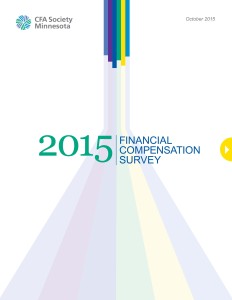Last month I attended two events focused on increasing the number of women in the Investment industry. The first event I attended was a presentation and debate on gender in the industry at the CFA Institute’s Society Leadership Conference in Hong Kong. The second event was a panel at the University of Minnesota, led by four female CFA charterholders, called “Paving the Way for Our Future Industry Leaders”. Both events discussed demand side and supply side issues with getting women in the investment industry and keeping them there once they start families.
It became clear during both discussions that the industry still presents some challenges for women (and men) in its work-life balance, sometimes stressful working conditions and occasional machismo culture. It was generally agreed, however, that great strides have been made at most firms in the last twenty years to improve the image of the industry and to achieve more acceptable working conditions for both men and women. Also, it seems that most employers strongly desire diversity on their teams – in gender, race, socio-economic background and approach to problems. Study after study has shown that diverse teams produce better results than homogenous ones, and are better as assessing possible risks. While even very talented women may have had a very hard time entering the industry in the 1980s, now they are strongly desired at many firms.
Despite all the change in industry culture and the increase in demand by employers for more women in their companies, we still have a supply problem. Approximately 20-25% of CFA charterholders in the U.S. are women, a range that has held steady for many years. Women make up the same percentage of candidates as well, so the overall ratio will not change anytime soon, at least in North America. More and more women are entering formerly male-dominated and demanding fields like engineering, medicine and law, but for some reason our industry has remained unattractive for most women who would otherwise be highly qualified to manage money, provide financial guidance to clients, trade bonds or manage equity risk. This is not true globally, as female CFA candidates in East Asia, especially China, are taking the CFA exams at the same rate as men.
What is it about our industry that fails to attract women and millennials? While there are obviously numerous explanations, I believe two reasons are very important.
The first is that we as an industry do a poor job of educating the public and the next generation about what it is we do all day long. “Finance” can mean many different things, many of which are very opaque to the average individual. We have not put in the time and effort to mentor and guide future leaders on the difference between a trader, an investment banker, a portfolio manager, a financial advisor or a risk manager. There are many different fields in our industry, but most people outside our industry are only acquainted with one or two of them (either from watching the movie “Wall Street” or from watching their cousin day-trading in his parent’s basement, wearing his pajamas all day long.)
The second reason is the way the industry is portrayed in the media. Most often when finance is in the news it is because of a rogue trader losing billions of dollars or a Libor-manipulator lying to his firm and regulators. Our industry is seen by many as unethical, full of money-loving jerks who like private gains but socialized losses. We do not do a good enough job of making sure everyone understands the benefits of a well-developed, well-regulated financial system, one that takes excess savings and deploys the money to its most productive use elsewhere, such as in infrastructure, car loans or startup companies. Our Industry allows individuals to smooth their consumption over their lifetime, and to store up savings for bad times. It allows for the purchase of a home well before most people would have the resources to buy one, and gives capital to entrepreneurs who attempt to create the next great device, software or medicine.
Most of us who work in their industry love our work and can’t comprehend why so many people, including women, fail to see the benefits of working in a fast paced, competitive, ever-changing industry, alongside smart, talented colleagues. We need to do a better job of educating the next generation about the variety of opportunities available in finance, and most importantly, we must maintain our high ethical standards, raising the profile of the industry for our future coworkers and clients.
Joshua M. Howard, CFA
President of the Board of Directors
CFA Society Minnesota






